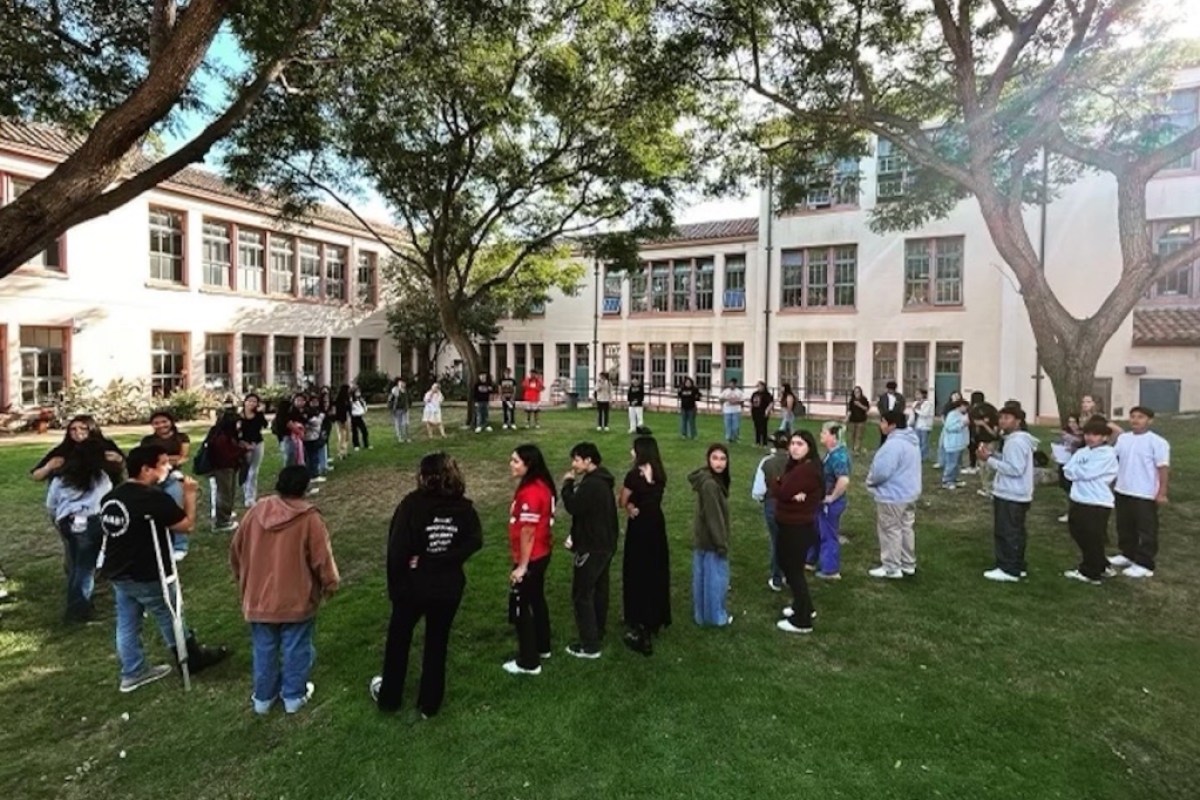After School Is
Where the Action Is
AHA! Highlights Its Guys’,
Outdoor, and ALLY Groups
By Tyler Hayden | November 16, 2023

Read all of the stories in our “Schools of Thought 2023” cover here.
Social-emotional learning programs hosted by AHA! have rolled out across the Santa Barbara Unified (SBUSD) and Carpinteria school districts, with hundreds of students participating in this year’s installment of the ever-popular activities.
These include the Peace Builders program at five middle schools; eight after-school group offerings; the Saturday Littlest Little Farm group at Montecito Union School’s Nature Lab; and classroom programs at Carpinteria Middle School and High School. As well, AHA! is bringing Council Circles to classrooms across both districts and just completed a series of Digital Wellness assemblies.
This year, the SBUSD has also contracted AHA! to run monthly online and in-person Parent Groups. Finally, as youth mental-health issues have reached epidemic levels, AHA! is working to promote connection and positive community via six free sessions of supportive therapy for teens and parents.
Here, Melissa Lowenstein, AHA!’s director of training, highlights three of the organization’s after-school offerings: the Guys’, Outdoor, and ALLY groups, which get together at San Marcos and Santa Barbara high schools.
Guys’ Group: Crediting René García-Hernández, AHA!’s new director of community engagement, for resurrecting what had become a dormant piece of the after-school lineup, Lowenstein said the Guys’ Group relaunched this fall with 30 participants. “We had so much interest,” she said.
The group’s activities run the gamut from discussions led by facilitators about anger, hygiene, and time management to pickup games of basketball on their Warrior Day. Recently, the group talked about relationships — both friendships and the intimate sort — as well as the concept of fatherhood. They also played video games together. “It’s about encouraging them to do all the fun things, but to have healthy perspective and use of them,” Lowenstein said.
They meet once a week, sometimes breaking into smaller cohorts, with facilitators also talking one-on-one with the teens. AHA! develops new curriculum every cycle, Lowenstein said, and is always happy to see return customers. “A lot of the guys come back in the spring,” she said.
Outdoor Group: A new offering this year, the Outdoor Group takes teens on outdoor adventures, where they learn about the natural world — and by extension, themselves and each other. Led by mental health counselor Julia Osborn, who has experience as a wilderness therapy guide, the group meets most regularly at Parma Park but also makes it a point to explore other parks and beaches.
The group’s recent activities include making art out of natural materials, practicing mindfulness, talking about the four elements, going on a scavenger hunt, having a conversation about grief and climate change, doing some plein-air painting, conducting a beach cleanup, planting seeds, and starting journals.
“When you start doing this work, one of the best parts is thinking about what you’re going to do with the kids,” Lowenstein said, noting how AHA! adheres to a national framework of social-emotional learning and is founded in evidence-based practices.
ALLY Group: ALLY groups foster personal growth through fun, interactive curriculum, Lowenstein said. “It’s about building skills that enable us to take really good care of ourselves and make the community a better place,” she said.
The teens practice approaching differences in opinion with curiosity and empathy, exploring their shared humanity, and learning valuable skills for giving and receiving support. And as allies and members of a strong and loving group culture, they’re encouraged to play roles in building safer, more welcoming environments on their respective campuses.
Participants go through Connection Circle leadership training and practice both within the group and in spaces across campus, which may include other classrooms, roving lunchtime circles, and faculty/staff meetings.
“They have the opportunity to talk about what matters to them,” said Lowenstein, “and how they can be a change agent in the world. Because being a kid now, it’s easy to think you don’t have control over anything.”




You must be logged in to post a comment.